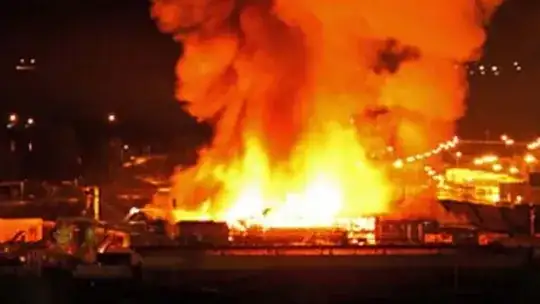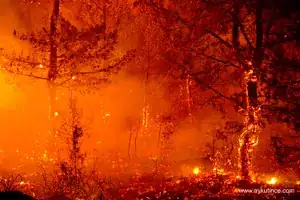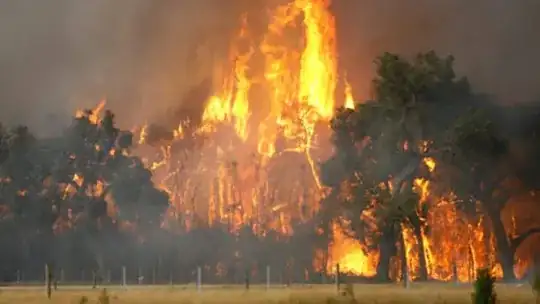The Main Problem
Let's get a few things clear first. The first being that an atmosphere which goes into flames by itself (as in, the fuel gas and oxygen are both present in large amounts in the atmosphere itself) would make the planet inhospitable for humans.
Why? Because atmosphere is a huge thing and you would need gases in huge amounts to send the whole atmosphere burning. Take for example, the case of methane combustion:
CH$_4$ + 2O$_2$ =======> CO$_2$ + 2H$_2$O ($\Delta$H = −891 kJ/mol)
One mole of methane is 16 grams of it. And ... if you let methane gas collect in a house and then combust ... 
Now if you had methane in large enough amounts in the atmosphere to send the whole atmosphere burning ... hell is the first word that comes to mind. And forget Mercury, Venus ... that burning planet would be a horror to look at from a distance, let alone being hapless enough to be there.
First option
One possibility for your required scenario could be that some portions of atmosphere go on burning while others stay unburnt. You could theoretically have such a scenario but it is practically impossible, thanks to winds. Although methane is much lighter than air (16 grams per mole versus ~29.5 grams per mole), it takes much time to rise above the atmosphere. Which means that if you have methane gas in such large amounts to make a layer in the upper regions of the atmosphere, it will go on a catastrophic explosion before reaching there (thanks to static electricity and lightning bolts).
You can have regional combustion reactions on a planet where a gas is naturally released into the atmosphere and in the lack of winds temporarily collects in a place before burning off in a huge explosion. We are talking about confined explosions here. Take for example the scenario at Door To Hell (Turkmenistan)

Basically it was a site for natural gas mining. But the setup collapsed into the ground and the folks set the crater on fire to prevent the leak of methane into atmosphere. That was done in 1971 and ... the methane supply has not stopped leaking yet and the place is still on fire after 45 years.
So you can have such a scenario in your world where there are several such locations where natural gas (methane) leaks in the environment. There are natural confinements which stop methane from being freely released into the atmosphere (networks of caves maybe?). Methane gas keeps on collecting in those caves (with a small amount of it leaking into the atmosphere) when in an instance it all goes into a terrible explosion audible from dozens of miles away. Static electricity is considered the cause of these explosions. You can have several such craters on your planet. As a general rule, the lesser the age of the planet, the greater chance there would be to have more natural sources of natural gas.
You can also use other flammable gases such as hydrogen (not suggested because it is so lightweight, it is nearly impossible to contain it in a cave system for enough time to allow for a massive explosion), ethane (C$_2$H$_4$) and hydrogen sulphide (H$_2$S).
Another Option
Another option for having huge combustions is to increase the oxygen content in the air. This would not put the whole atmosphere in flames, but the chances of things going up in flames and the extent of those burnings would be immensely greater than what we have on Earth now.
For example, take the case of Carboniferous Period. The oxygen content in atmosphere at those times was ~35% as compared to ~21% (by mass) today. Scientists expect that forest fires then were horrible and much more common than they are today. We don't know exactly how they would have looked like, but a scenario like this comes to mind ... 





